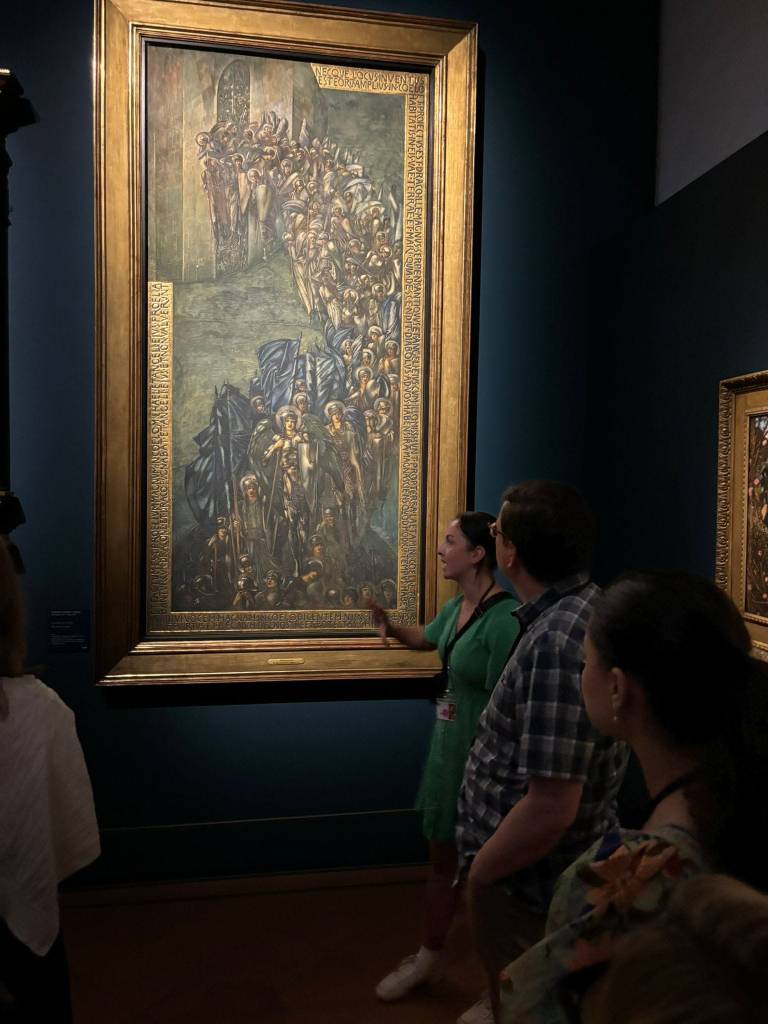
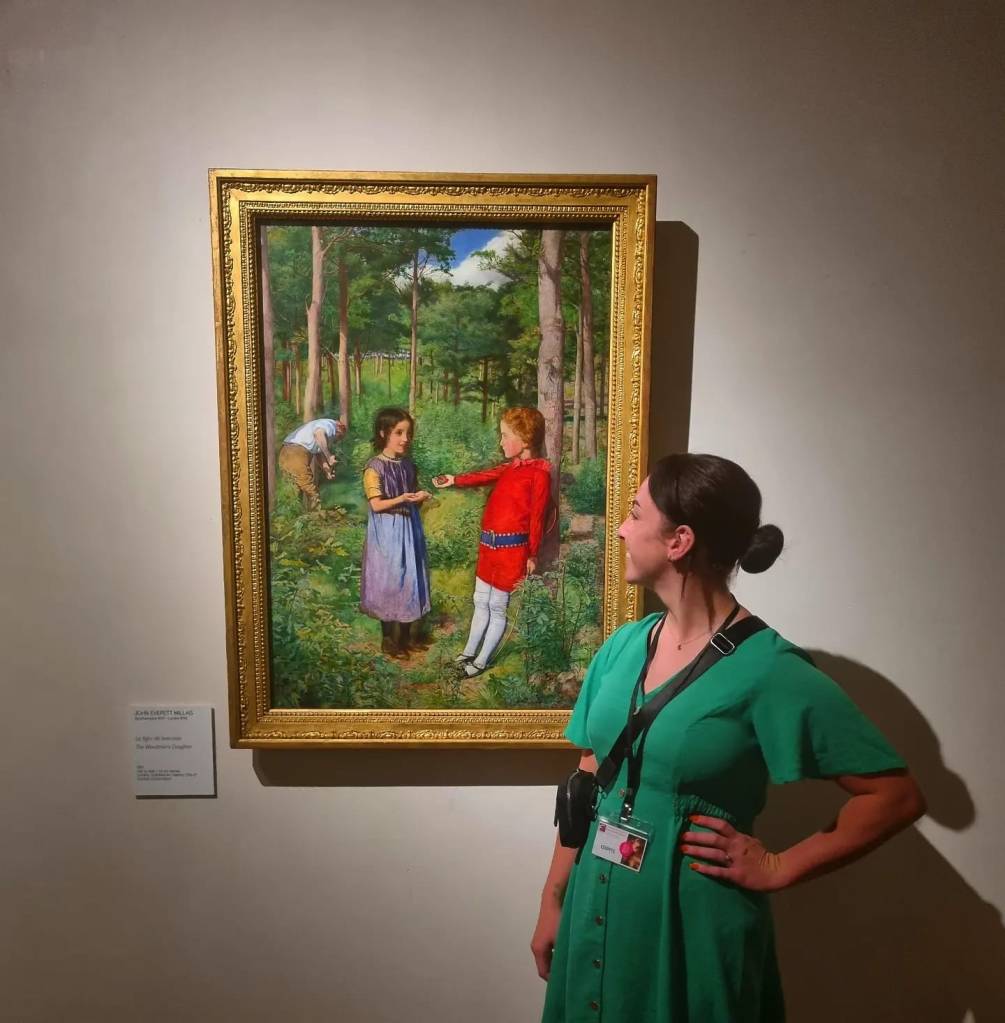
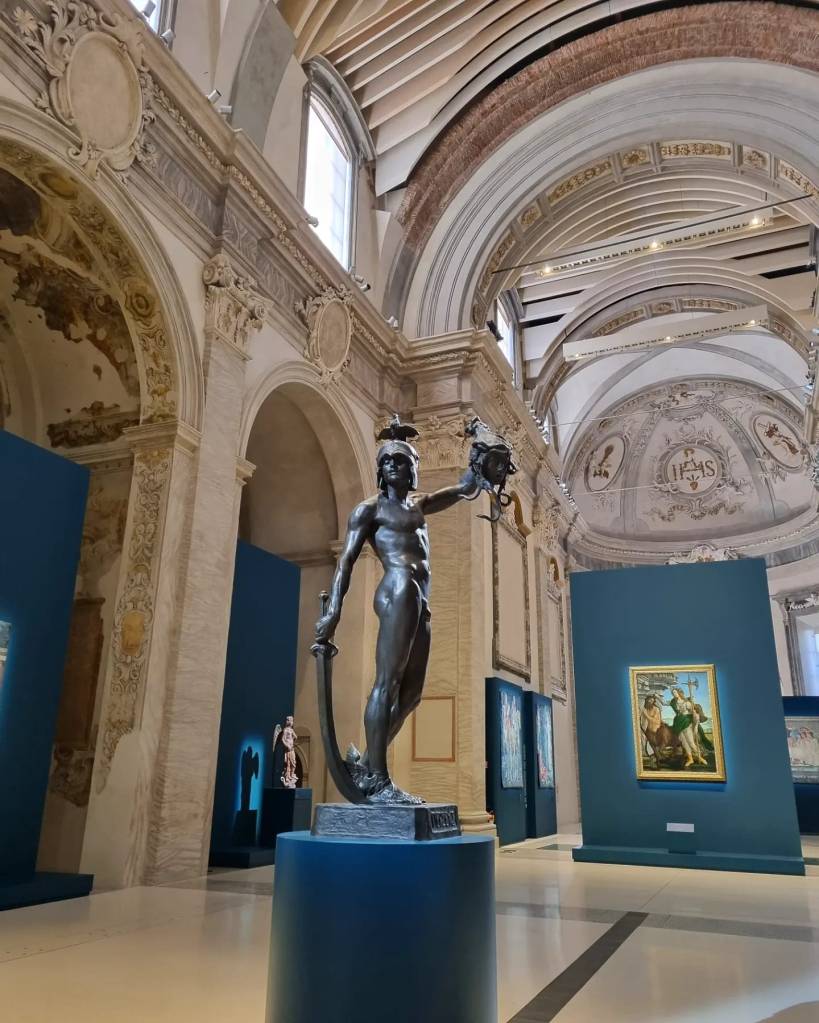
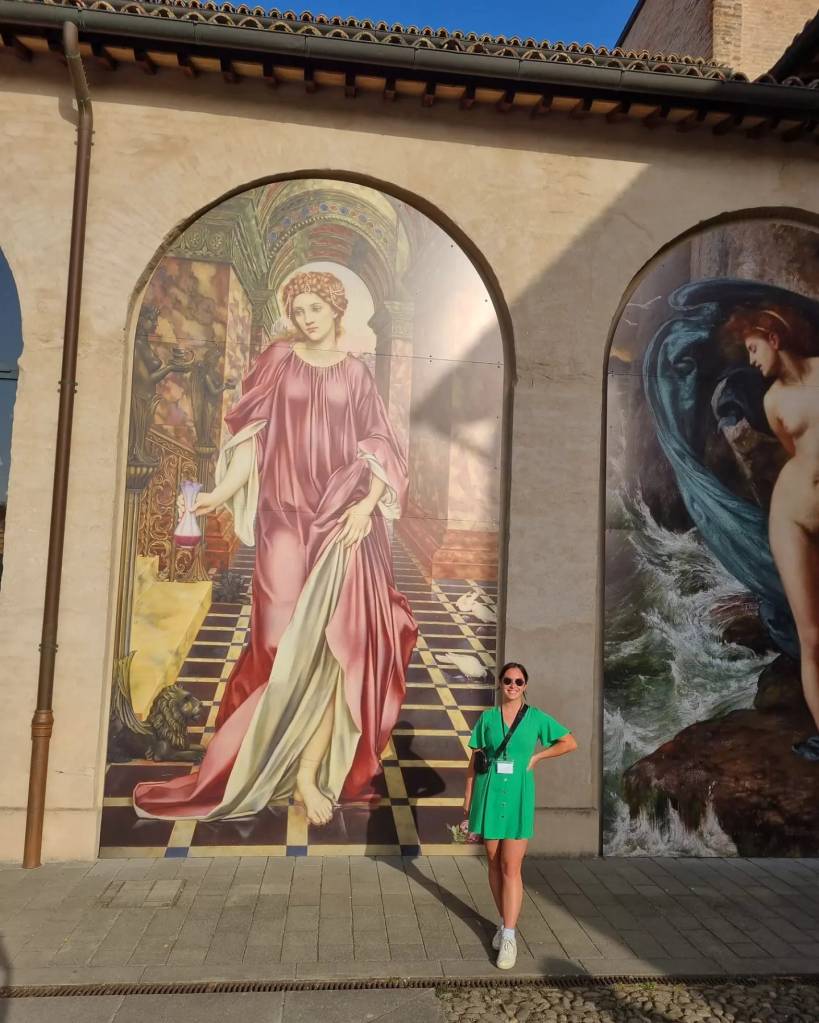
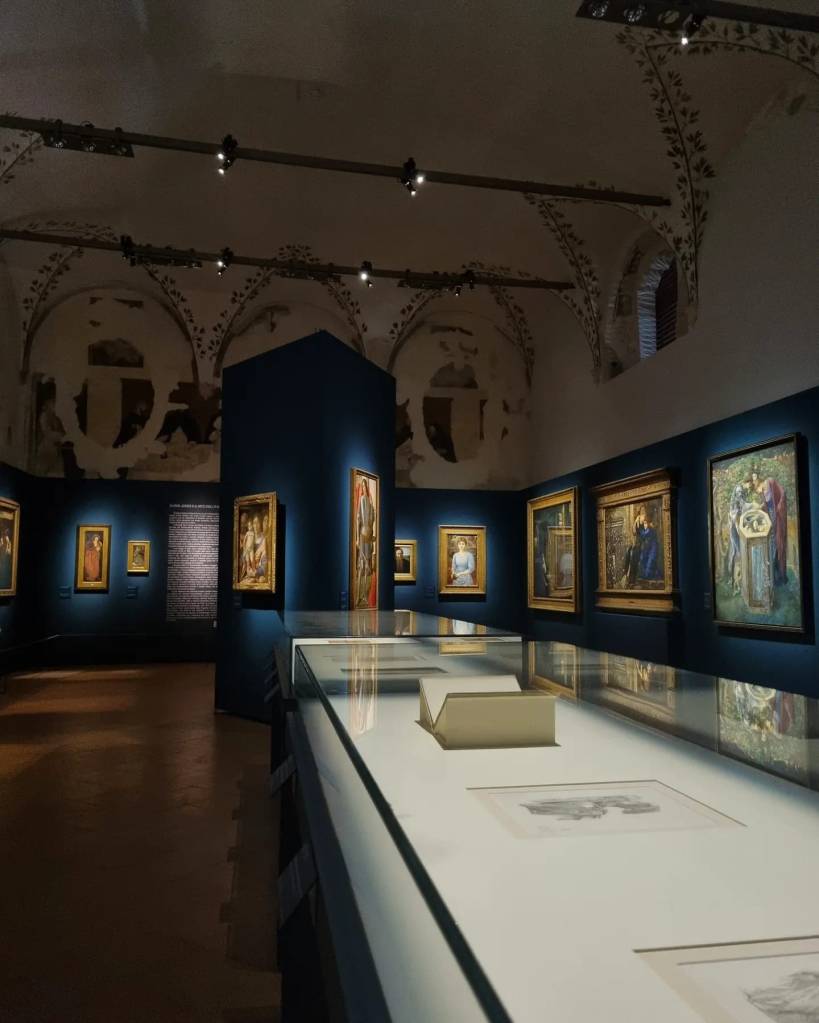
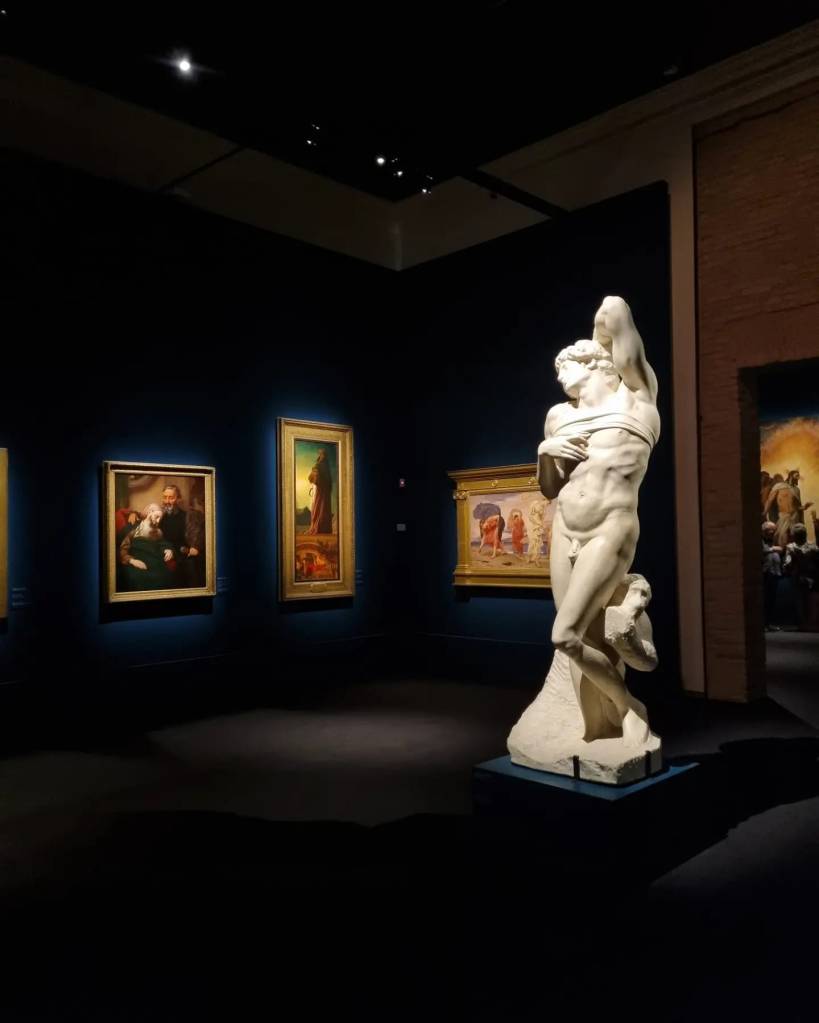
Hello all and happy June! The summer solstice has officially passed and we are now finally beginning to enjoy some warmer weather here in the UK. I have recently returned from a trip to Forli, Italy which was beautifully warm and sunny. Just think that we Brits are lucky to have the weather we are currently having, the Italians are blessed with such glorious sunshine for most of the year!
Just a quick mention of my quick stop to Bologna before my trip to Forli. I enjoyed embracing the bustling nature of Italy’s seventh most populous city. I would definitely recommend touring Bologna for a little while to appreciate its history and architecture. Famous for its plazas, towers, and lengthy porticoes, Bologna has a well-preserved historical centre, which is well worth a visit in itself!
Anyway, the main reason for my trip was to see the Preraffaelliti Rinascimento Moderno ‘Pre-Raphaelites Modern Renaissance’ show at Forli’s San Domenico Museum. The show has been on since February 24th, and is due to close on June 30th. It is the first major exhibition in Italy to examine the influence of Italian art, not just on the Pre-Raphaelites, but on British art more generally. The exhibition was curated by Elizabeth Prettejohn, Peter Trippi, Crisinta Acidini and Francesco Parisi, and showcases over 350 works of art. These range from drawing, oils, watercolours and prints, to sculpture, stained glass, metalwork, jewellery, and a grand piano (I’ll get to that shortly!). I was lucky enough to be invited to join the lovely students from Yale University on their grand European tour! I also got to catch up and network with some fab colleagues from the University of York, who kindly allowed me to tag along. It is always a pleasure to travel with such inspiring folk. Please note, that my review of the exhibition is subjective, and may not be as well informed as other reviews of the show. I am reflecting from mainly a Pre-Raphaelite enthusiast’s perspective, but there are plentiful works in the show by Italian artists that are probably discussed in depth elsewhere. Anywho!
My first impressions of the show when I walked into the first room can be summed up using one word- MEGA. The influence of Italian art is obvious as soon as you first walk in. The first room of the exhibition had once been the Church of St James in a Domenican convent constructed in the thirteenth century. The scale and grandeur of this room really sets the tone for the rest of the show, and has some truly wondrous gems on display. For instance, there’s an entire section of the room dedicated to Burne Jones’s The Holy Grail tapestries, which is no small feat. There are four large murals produced by Frederick Cayley Robinson (Orphan Girls Entering the Refectory of a Hospital being one of them) which are given their own pride of place, as well as a number of works by early Italian artists such as Filippo Lippi, Sandro Botticelli, Fra Angelico and Luca Signorelli, again, just to name a few.
In the rooms that follow, the Italian influence on Pre-Raphaelite painters continue and remain a central theme. There are rooms devoted to individual artists such as Holman Hunt, Millais, Dante Gabriel Rossetti and Ford Madox Brown. There’s a notable section at the end of the second room that holds a number of Ruskin’s early architectural sketch work. There’s also the beautiful Decorated Cusped Gothic Window designed by Ruskin, Effie Gray and Millais that sits opposite Millais’ own Design for a Gothic Window, the latter I got to see in person once before at Lord Lloyd Webber’s house. It was a delight being able to see these two designs be placed opposite one another, and I think it was a stroke of genius on the curators’ part. As you continue through the exhibition, you get to see some lovely original Morris designs, as well as a charming self-portrait by Morris himself. You then walk towards what could be none other than Burne Jones’ The Graham Piano which is absolutely dazzling and really takes centre stage. Next to the piano, is the entrance to the Burne Jones room? Now, I am not Burne Jones expert in the slightest, nor will I ever attempt to be, but I have to say this room just absolutely stole the show. The fan favourites Love Among the Ruins and The Briar Rose Series are there, as is The Fall of Lucifer (my favourite). A preliminary version of Pygmalion and the Image I: The Heart Desires and The Baleful Head are also on display. I would list the entire room, but honestly, the collection there is enormous! Even the room itself beautifully complemented the scale of the works the show had to offer. The whole room, in my opinion was just (*chef kiss*).
In the upstairs rooms you come across works by other notable artists such as Simeon Solomon, J.W Waterhouse, Walter Crane, G. F. Watts and F.W. Burton. There is also a conscious effort to celebrate (although there will never be enough of this in my humble opinion) the efforts of women artists, including Siddall, Marie Spartali Stillman, Phoebe Anna Traquair, Eleanor Fortescue Brickdale and a large section dedicated to Evelyn De Morgan. It is always a pleasure being able to view Medea and Aurora Triumphans in the flesh.
What is most refreshing about this show is not only the space dedicated to the later successors of Pre-Raphaelitism, such as the tempera painters Marianne Stokes and Joseph Southall, but also the final section which is devoted to the Italian artists who had, in turn, been influenced by Pre-Raphaelitism just as the Pre-Raphaelites were influenced by their predecessors. I think I found it most enjoyable because, well, I know little about them. It closes the exhibition in a very satisfactory way for me, and I think it serves as a reminder of the fact that this is an exhibition wherein Italian art and its influence is very much at the heart of it.
It took two whole days to truly appreciate the exhibition. It may be too late to encourage anyone to travel over and visit, but I would heartily recommend anyone to purchase a copy of the exhibition catalogue if they can! It’s a wonderfully illustrated book (and a heavy one at that). Be aware though, it is only available in Italian, so get your translators at the ready. I can safely say that the exhibition left me speechless and emotionally drained – but in a good way. It is truly a triumph, and I applaud all who were involved – congratulazioni!